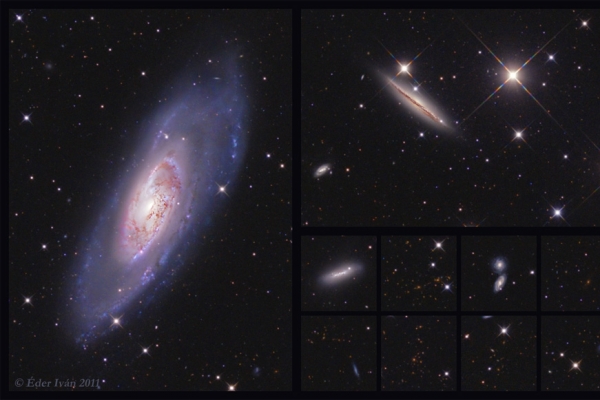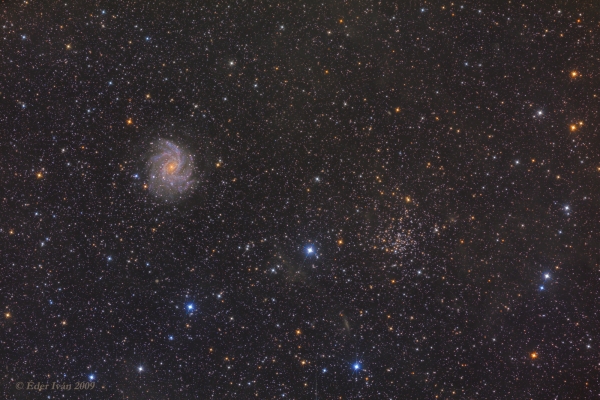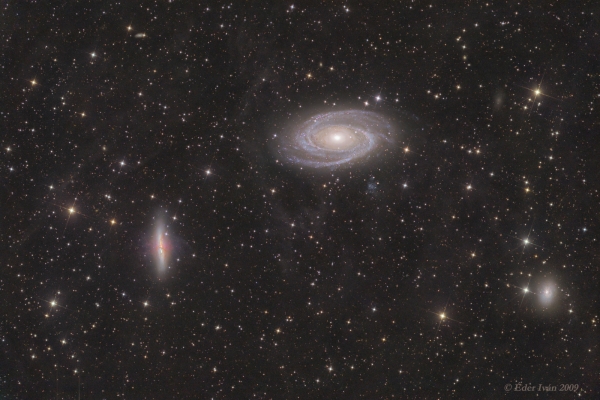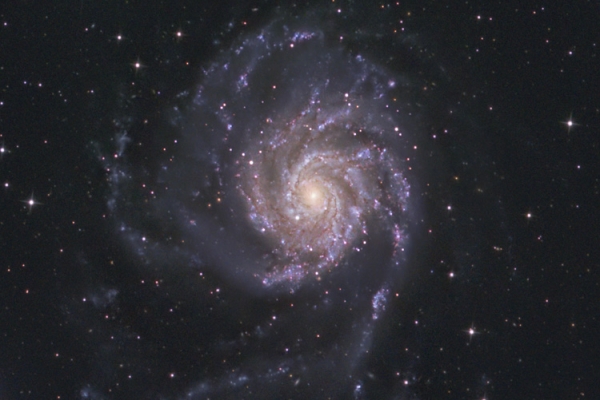M 81-82 and Integrated Flux Nebula
in Ursa Maior
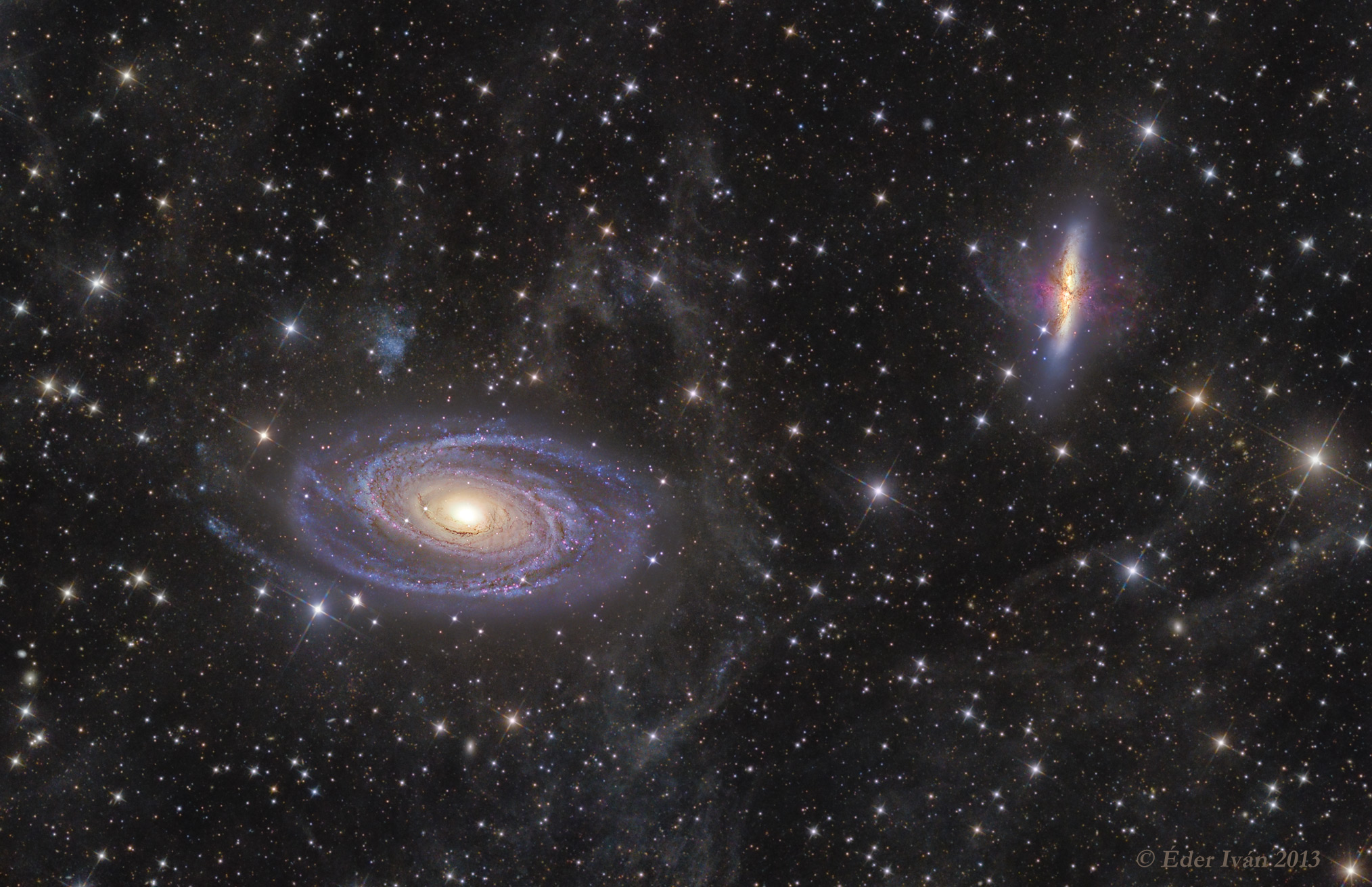
These
famous large and bright galaxies lie about 12 million light years from
Earth. They locked in a gravitational struggle for the past billion
years or so. Their most recent close encounter likely resulted in the
enhanced spiral arms of M81 (left) and violent star forming regions in
M82 (right). M82 is being so energetic, the galaxy glows in X-rays (not
seen in this image). After repeated passes, in a few billion years only
one galaxy will remain. From our perspective, this cosmic moment is
seen through a foreground veil of the Milky Way's stars and clouds of
dust. Faintly reflecting the foreground starlight, the pervasive
dust clouds are relatively unexplored galactic cirrus, or integrated flux nebulae, only a few hundred light-years above the plane of the Milky Way.
It took nearly
25 hours of total exposure time to record this faint integrated-flux
(IF) nebula. Data was collected over three seasons, in 2009, 2011 and
2012. The majority of the exposures were taken in March 2012 over
three nights.
- Royal Observatory Astronomy Photographer of the Year 2013 competition - highly commended in "Deep Space" category.
- ASA Astrophotography Competition 2013 - 3rd place in "expert" category.
- NASA Astronomy Picture of the Day - 2013.09.25.
Image details
- Instrument:
- 300/1200 Newton, 3" Wynne (1130mm effective focal length)
- Camera:
- Home-modified Canon EOS 5DmkII
- Mount:
- Fornax 51 + Boxdörfer DynoStar
- Guiding:
- 9x50mm SkyWatcher finder scope (50/180mm), Lacerta-MGen autoguider
- Exposure time, filters:
- 309x5 min (24 hours 45 min. total) @ ISO 1600
- Location, date:
- Agasvar (Mount Matra), Hungary; 5 nights of 2009, 2011 and 2012 Springs.
- Observing conditions:
- Transparency: 6 - 8/10, Seeing: 5 - 8/10, Temperature: +7 - +12°C
- Processing:
- ImagesPlus, Registar, Pixinsight LE, Photoshop


